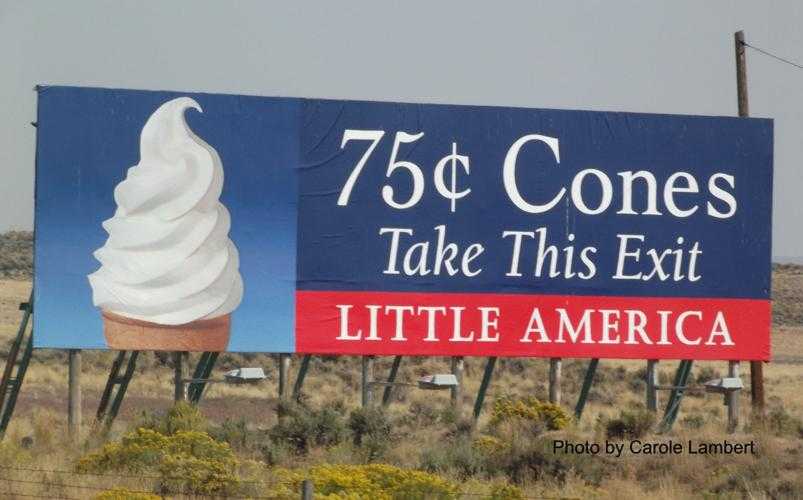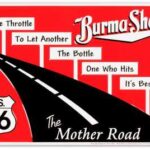While the digital marketing landscape continues to expand with social media platforms and online ad networks, there’s still something remarkably powerful about a classic billboard. For many businesses, especially those located near highways or in tourist-heavy areas, outdoor advertising can deliver incredible results.
Consider the iconic billboards for Wall Drug in South Dakota or Little America’s 75 Cent Ice Cream Cones in Wyoming. Anyone who has traveled on I-90 or I-80 has likely seen these signs peppering the roadside for miles. These campaigns didn’t just survive in a modern world—they thrived, precisely because they followed a simple yet effective formula.
Why Outdoor Advertising Works
Billboards are one of the few ad formats that virtually guarantee an audience. Commuters, vacationers, truck drivers—they’re all potential customers cruising past at 65+ miles per hour. Unlike social media ads, they can’t be “skipped.” If your message is crafted well, it becomes almost impossible to ignore.
Plus, according to the Out of Home Advertising Association of America (OAAA), 66% of smartphone users took some kind of action after seeing an out-of-home ad, such as searching for more information or visiting a business’s website.
The Golden Rules of Outdoor Advertising
Creating an effective billboard isn’t just about slapping your logo onto a big sign. There are essential guidelines that increase visibility and retention:
- Keep the Message Short
Six words or fewer are ideal. These words should be simple and direct. Think: “Next Exit: Best BBQ!” or “Exit 123: Cheap Gas!” - Use Big, Readable Fonts
Avoid ornate or script fonts. Stick with bold, sans-serif styles that are legible from hundreds of feet away. - Include a Simple Image
Use one bold image to capture attention. A drooling cartoon burger? A kid with ice cream all over their face? Simplicity is key. - Always Include a Location Cue
“Next Exit,” “5 Miles Ahead,” or “Exit 142” tell drivers exactly what action to take. Without this, your billboard might be memorable but ultimately ineffective.
The Logistics of Billboard Advertising
Most billboards are owned and managed by large advertising companies. They usually offer packages that include multiple billboard placements in a given region. You might get five to ten boards in a package, and not all locations will be ideal. Unfortunately, it’s often a take-it-or-leave-it situation.
Billboard sizes vary and are typically referred to in terms of “sheets.” A neighborhood board might be 8 sheets (think large poster), while highway billboards are often 48 sheets or more. Once you’ve signed a contract and submitted your design assets, the ad company usually handles printing, installation, and maintenance.
Budget Considerations
Billboard costs vary depending on traffic, size, and location. High-traffic urban billboards can cost thousands per month, while rural placements might only be a few hundred. The key is to think of this as an investment in brand awareness, not direct sales.
Related Post: 27 Free/Inexpensive Proven Ideas to Create Brand Awareness
If your business relies on physical visits—such as a diner, motel, roadside attraction, or gas station—billboards can be a cost-effective way to attract spontaneous customers.
A Few Great Billboard Examples
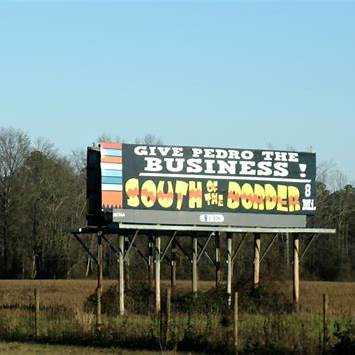
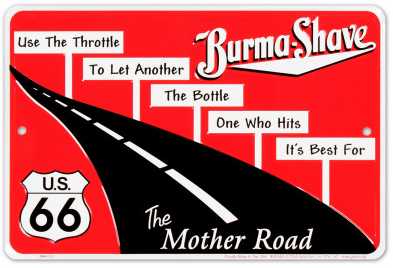
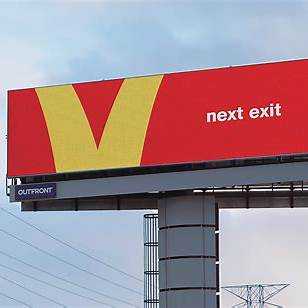
- South of the Border, along I-95 in the Carolinas, is a masterclass in quirky, high-volume signage.
- Burma-Shave (a retro brand) once used a series of small signs to create a sequential rhyme—entertaining and effective.
- McDonald’s has perfected minimalism with highway billboards that simply say “Coffee. Exit Now.”
These campaigns prove that the right words in the right location can lead to remarkable results.
Is Billboard Advertising Right for You?
Outdoor advertising isn’t for every business. It works best when:
- You have a physical location near a high-traffic road.
- Your product or service is relevant to travelers.
- You can afford multiple placements to build repetition and visibility.
If you tick those boxes, a well-designed billboard could be your secret marketing weapon.
Could a well-placed billboard bring more customers through your doors? Have you ever made a purchase decision based on a sign you saw while driving?

